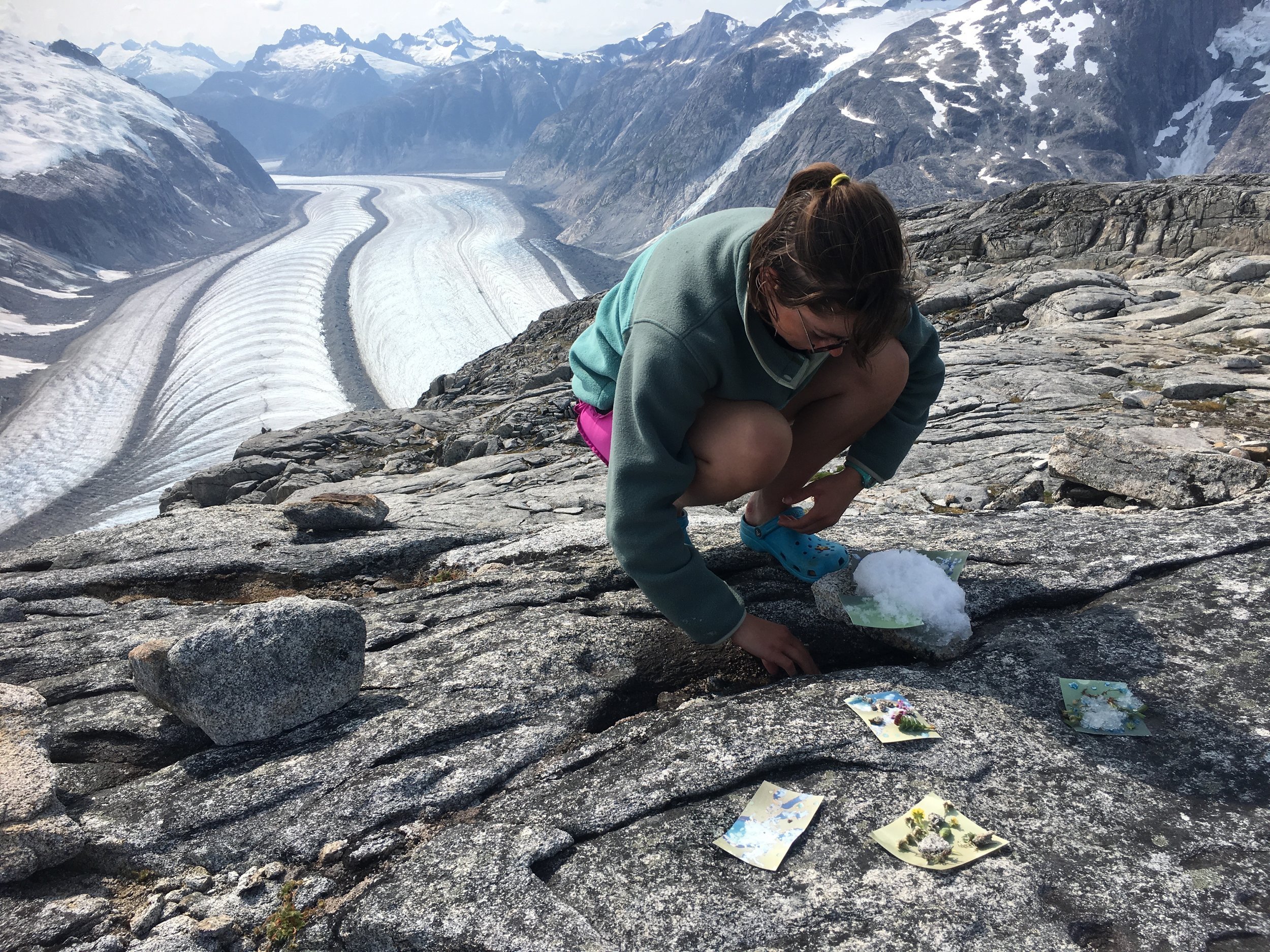Through creative research, engagement, and outreach – both in the field and off the Icefield – we encourage interdisciplinary learning in tandem with hard science topics. JIRP approaches science communication from many different angles – from documentary photography to science journalism to scientific illustration to abstract art.
Art, Science Communication, and Storytelling on JIRP are fluid fields that promote diverse knowledge types, connecting to JEDI (Justice, Equity, Diversity, Inclusion) values. This interdisciplinary methodology promotes a more inclusive approach to earth science by valuing different kinds of knowledge production and learning styles, and deepens the connections students have to both the quantitative and qualitative information. By incorporating art, storytelling, and science communication as valid ways of learning, experimentation, and outreach, JIRP prepares students to become leaders for climate science with a well-rounded educational foundation.
JIRP’s interdisciplinary programming provides opportunities for all students to use creative methods as a lens for understanding climate science, while studying glaciology and related topics through research and lessons led by faculty and staff on the program. Offerings focus on integrating methods for research, storytelling, and outreach into the broader glaciology and Earth science curriculum. Areas of study range each year depending on Teaching and Research faculty. Subjects can include (but are not limited to): field sketching, photography, video, painting, writing, audio/podcasting, science illustration, printmaking, and other types of experimental and conceptual art.
FAQS
Does JIRP have an artist-in-residence program?
For now, unfortunately we do not have funding for an Artist-In-Residence program.
I’m an artist and I want to come to JIRP. How should I apply?
For artists interested in participating in JIRP, there are three routes available for them:
Apply as a Student. You will participate in the full field science program as any student would. Read more about our Student Program.
Apply as Teaching Faculty. This is a funded teaching role and you will be expected to work on curriculum and focus on teaching throughout the program. You should have an interdisciplinary approach to teaching art under the umbrella of Science Communication and Storytelling. Teaching Faculty are especially encouraged to think about how they can collaborate with other faculty on projects and educational efforts in the field. You may work on personal artwork during down time (there is not a lot of this!), but not at the expense of teaching, and are encouraged to also loop students into your process. Read more about Faculty Positions.
Apply as Research Faculty. This is the closest we have at the moment to a "traditional" AIR program at the moment. You should apply with a project idea in mind, and will need to find funding to join the program (we are happy to provide letters of support if you are applying for outside funding). While on JIRP you will be expected to share your work with others, but the focus will be a bit more on your own research than on teaching. Everything that normally applies to science research faculty would apply to art research faculty, in terms of experience level, assistance from JIRP, project planning, etc. Read more about Faculty Positions.
What kinds of gear/supplies can I bring?
We all travel pretty “fast and light” on JIRP and there is relatively limited room for supplies to be transported in and out of our field camps. We can discuss specifics during the field planning phase, but if you are proposing a research/teaching project, think about how supplies can be minimized, streamlined, or packed down.
What does JIRP look for in artist applicants?
Each year, we strive to create a vibrant, diverse expedition environment for all involved – this includes the perspective of students, staff, and faculty, as well as the types of learning and research opportunities on the Icefield.
If you are applying as Teaching or Research Faculty, we are looking for artists who have a demonstrated interest in environmental/glacier science, possess technical knowledge of their craft, and have experience working independently in their field. You should be engaged in creative ideas for including art on the Icefield and be excited to contribute to the JIRP community and experience.
Previous backcountry experience is not a requirement, but does factor into our decisions when putting together a faculty cohort. We work with all participants to learn necessary skills to safely traverse the Icefield and participate in research, but it is helpful to have some level of outdoor experience and physical fitness.
Our programming is very dynamic in the field and things change quickly! Most importantly, you must be keen to fully participate in expedition life, know how to go with the flow and be flexible, and collaborate with others!
Still have questions? Feel free to email Hannah Mode, who facilitates and develops creative programming, at hannah@juneauicefield.org.




















